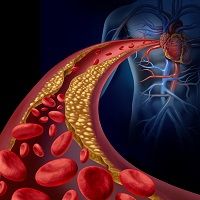Article
The Burden of Disease in Homozygous Familial Hypercholesterolemia
Author(s):
Homozygous familial hypercholesterolemia (HoFH) is a rare and severe hereditary lipid disorder. Patients with HoFH generally have very high serum levels of low-density lipoprotein cholesterol (LDL-C) that is treatment-resistant. HoFH puts affected patients at extremely high risk of premature onset coronary heart disease, and many patients die before they reach their mid-30s.

Homozygous familial hypercholesterolemia (HoFH) is a rare and severe hereditary lipid disorder. Heterozygous FH is a common genetic disorder that occurs in 1:500 people; HoFH is much rarer, occurring in 1 in a million births. Patients with HoFH generally have very high serum levels of low-density lipoprotein cholesterol (LDL-C) that is treatment-resistant. HoFH puts affected patients at extremely high risk of premature onset coronary heart disease, and many patients die before they reach their mid-30s. HoFH’s clinical features and treatment have been extensively researched. A study published in the journal Atherosclerosis Supplements, examines this disease’s societal and socio-psychological impacts to determine its burden of disease and treatment from the patient’s perspective.
The researchers conducted semi-structured interviews with 24 HoFH patients. Patients with HoFH carry a considerable burden. Its physical signs and related limitations are onerous. Eleven of the patients considered themselves sick intermittently or continuously, and they reported spending considerable time seeking treatment and managing their disease daily. More than half had experienced severe cardiovascular events including stent placement, bypass surgery, and aortic valve replacement.
Patients with HoFH also experience a number of psychosocial problems and treatment-related issues. HoFH patients also report impacts on their education and employment situations; acute episodes and ongoing medical needs make it difficult to work or matriculate from post-high school education. Most patients (n=19) reported that the disease did affected their self-image only marginally. They reported that the most troublesome aspects of the disease included physical problems, aesthetic problems like xanthomas, and uncertainly about the future.
LDL apheresis is a standard-of-care therapy for HoFH and patients reported spending at least 5 hours per week traveling to and attending apheresis.
Fewer than half of patients were able to work fulltime, many noting that they needed to schedule work around apheresis sessions.
The researchers advise healthcare professionals to evaluate the potential impact of treatment decisions on HoFH patients, and especially to discuss commitment, preparation, and support with patients. Patients may need psychological support routinely.




